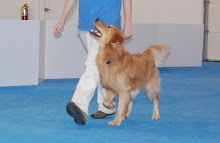1) Separate everyone. 2 barriers (doors, crates, gates, leashes, fences) between the trouble makers at all times. We want a week or two of no incidents. This is to help the dogs calm down, but more so to give the humans a break. The humans need to start returning to the feelings of safe and calm in their own household.
2) Make a list of all the problem areas. Things that triggered fights, disagreements, growls, barks, freezes, stiffness, or stress. We can look for patterns.
3) If appropriate right now, off property walks for the trouble makers, 1 dog per human. If there is only one person in the household, this sometimes needs to be modified. If your dog is not good at walking....they aren't ready for this. If your dogs will still be upset on opposite sides of the street, not ready. Dogs should be far enough apart to feel safe and happy.
4) Have a plan. If the dogs were to get into a fight, we want to know the safest way to respond. We do not want people or dogs getting hurt. If we have to use this plan, and especially if it has to be used more than once, we HAVE to find out how "Separate everyone" is not working and how we can resolve that issue.
And, schedule an appointment with an appropriate professional. We want to be sure we address all the issues at hand. Sometimes one of the dogs has had a history of resource guarding with people as well. Or is a generally shy dog. Or is physically uncomfortable. All things that increase stress and can contribute to problems.
 |
| Note: This is play. |




No comments:
Post a Comment